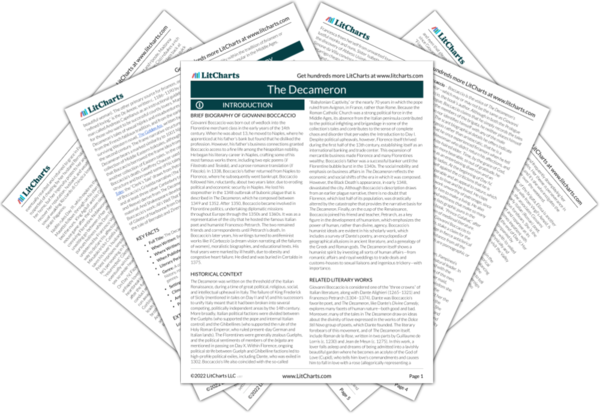AI ToolsNew
Tools to make learning and teaching easier
|
Previous
Day 6: Tenth Tale
|
The Decameron: Day 6: Conclusion Summary & Analysis |
Next
Day 7: Introduction
|


Upgrade to unlock the analysis and theme tracking for all of The DecameronThe Decameron!
Get LitCharts A+